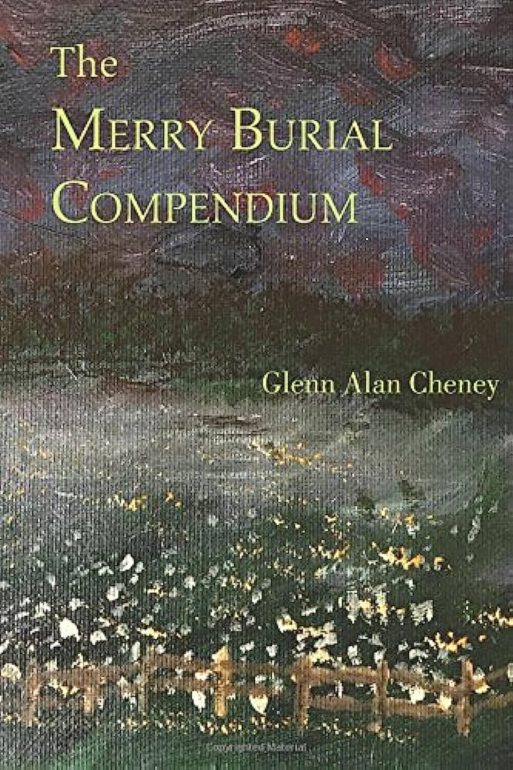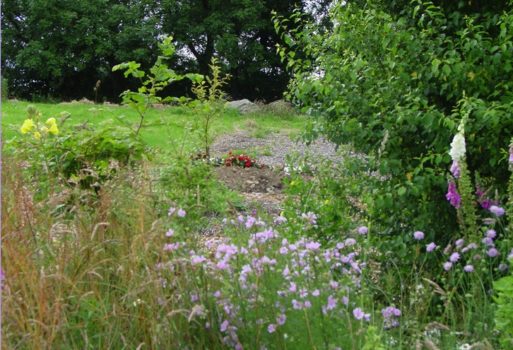 Last year, SevenPonds posted an article written by Glenn Alan Cheney, a Trustee of the Connecticut Green Burial Grounds in Hamden, Connecticut. Mr. Cheney is the author of the Merry Burial Blog and a number of books on a fascinating array of subjects, including a short compilation of interesting stories and facts about death called “The Merry Burial Compendium.” Mr. Cheney sent me a copy of the book when we corresponded last year, which, I’m embarrassed to say, I apparently stowed away on my bookshelf and promptly forgot.
Last year, SevenPonds posted an article written by Glenn Alan Cheney, a Trustee of the Connecticut Green Burial Grounds in Hamden, Connecticut. Mr. Cheney is the author of the Merry Burial Blog and a number of books on a fascinating array of subjects, including a short compilation of interesting stories and facts about death called “The Merry Burial Compendium.” Mr. Cheney sent me a copy of the book when we corresponded last year, which, I’m embarrassed to say, I apparently stowed away on my bookshelf and promptly forgot.
Then, just the other day, I was looking through my collection and came upon Cheney’s book again. I picked it up and began flipping through it, and realized it is quite a little treasure trove of fascinating and sometimes bizarre stories about death.
A Little of Everything
“The Merry Burial Compendium” opens with a section titled “Thanatology, History and Myth,” which begins with a brief exploration of the vernacular of death. In addition to many common terms most of us will recognize, it includes words like “martyrium” (a mausoleum for a martyr) and “psychopomp” (Greek for “soul guide,” a creature, angel or spirit that escorts the dead to the afterlife). Cheney follows this short glossary with a brief exploration of a number of seemingly unrelated subjects, including St. Joseph of Arimathea (the patron saint of undertakers), and “incorruptibility,” the inexplicable preservation of bodies of holy individuals such as St. Francis Xavier.
The books takes off from there, giving us tidbits of a history alongside helpful information about modern day burial practices, including burial at sea and interment on a “coral” reef (actually an artificial reef made of concrete on which coral will later grow). One example: Cheney talks a bit about the once-common practice of excarnation — the removal of flesh from the bones of a person who has died, usually to allow transport of the remains for burial. Used extensively by the Germans during the Crusades, the practice, known at the time as “Mos Teutonicus,” allowed the remains of soldiers who died on the battlefield to be transported to their homelands thousands of miles away (not unlike the modern practice of embalming, which originated for the same purpose during the American Civil War.)
Another section of this brief (it’s just 114 pages) yet tantalizing book lets us in on the last words of some famous and not-so-famous people, including Karl Marx (“Last words are for fools who haven’t said enough”), and Todd Beamer, a passenger on United Flight 93 on Sept. 11, 2001 (“You guys ready? Let’s’ roll”). These are followed by a short collection of poetry about death and a few posts from the Merry Burial Blog.

A woodland grave where a tree has begun to grow
Credit: naturaldeath.org.uk
The last section, titled “Posthumous Preferences,” is a list of do’s and don’ts for visitors to the site of (your) natural burial, where, nourished by your body, a tree has now grown over your grave. Here are some of Cheney’s “Do” suggestions:
Scatter native wildflower seeds around me.
Ask the sexton if you can hang a birdhouse on me.
Slow dance on my grave.
Leave a pile of peanuts for the squirrels.
Read a poem with my eyes.
Forgive yourself.
Forgive me.
What wonderful advice!
A Quirky Gift Idea
“The Merry Burial Compendium” is not a comprehensive book, and, to be totally honest, may not be a very factual one. Some of the stories are probably myth; some may be partly true and partly the product of several or more centuries of embellishment. Still, it’s nice little conversation piece and would make a great holiday gift for a friend who is not afraid to learn a little more about death (and maybe someone who is a little squeamish about the subject too!) Now that I’ve found it again, I think I’ll keep it on my coffee table instead of hiding it on my bookshelf.

 “The Merry Burial Compendium” by Glenn Allen Cheney
“The Merry Burial Compendium” by Glenn Allen Cheney


 Debating Medical Aid in Dying
Debating Medical Aid in Dying
 “Help Me, Helen”
“Help Me, Helen”















